As the British East India Company began to take root in South Asia, a distinct new technique of painting evolved across the region in the late 18th and 19th century. Influenced by European aesthetics and catering to the tastes of their British patrons, Indian artists developed what later came to be known as the Company style. Moving away from their own artistic traditions of the time, Indian artists began to integrate techniques such as shading, perspective and the use of watercolours, while retaining their proficiency in rendering the details of subjects — a combination that made them appealing to the expanding numbers of European connoisseurs in the country. This shift also marked a departure from the courtly, elite and formal subjects of miniature paintings of the time, as the focus shifted to common people, artisans and everyday professions. Much of this particular change came about from the desire of the Britishers, far away from home and the familiar, to capture what they witnessed in their everyday lives in India, and share it with the folks back home. [caption id="" align=“alignnone” width=“825”] 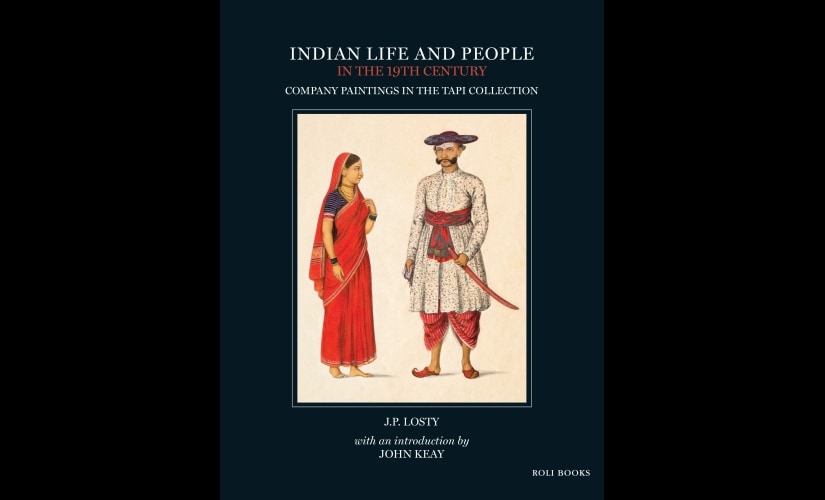 ‘Indian Life and People in the 19th Century: Company Paintings in the TAPI Collection’ by JP Losty[/caption] Some two hundred years after they were executed, many of these paintings have found their way to collectors Shilpa and Praful Saha, founders of the TAPI Collection, and are now the subject of curator and art historian JP Losty’s catalogue of the same, Indian Life and People in the 19th Century: Company Paintings in the TAPI Collection, published by Roli Books. The catalogue, with an introduction by historian John Keay (India: A History), traces the origins and evolution of the genre of painting, while highlighting works from the major regions where such paintings were produced — Murshidabad, Calcutta, Patna, Lucknow, Delhi, Punjab, Kutch, Tanjore, Trichinopoly, Madras, Kerala and the Andhra Coast. Gracefully and meticulously put together, the catalogue explores the subjects commissioned by officials of the Company, such as occupations, customs, dress, bazaars, festivals and daily life of ordinary people. The Shahs with their collection here are “not so much interested in the history of art as in what these paintings reveal about the people of India two centuries ago, how they lived and went about their daily lives and what they wore doing it.” [caption id=“attachment_5868171” align=“alignnone” width=“825”] 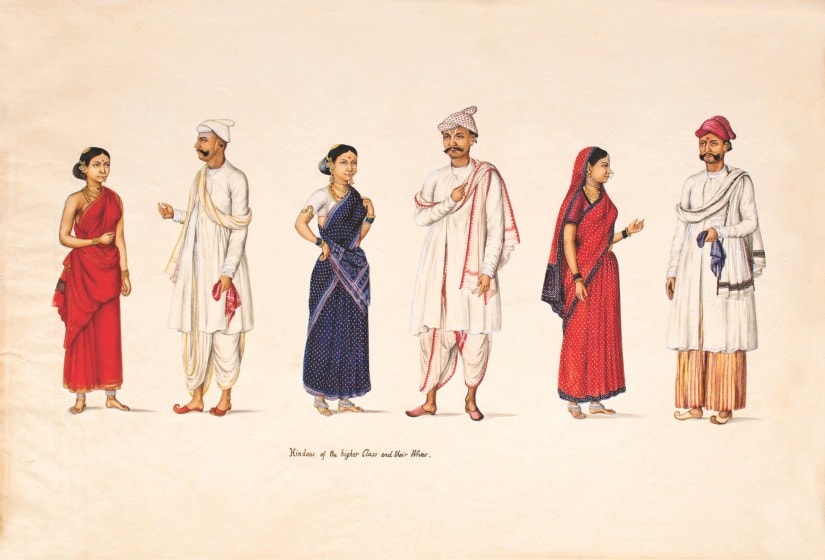 Higher-class Hindus. Photo courtesy TAPI Collection/Roli Books from the book ‘Indian Life and People in the 19th Century: Company Paintings in the TAPI Collection’ by JP Losty[/caption] Nonetheless, the catalogue does provide a fair share of history and context for the paintings. In his introduction, Keay recounts the seminal contributions of art historians and curators William and Mildred Archer toward cataloguing and subsequently orchestrating the surge of interest in the Company style during the mid and late 20th century. “For defining and rewriting an almost forgotten chapter in the history of Indian art, the art world remains deeply indebted to the Archers,” he writes. Keay also traces the commissioning history of these artworks and how, geographically, the market for this particular style of painting was (for the most part) “following the flag”. The princely state that weren’t under the direct control of British produced little Company art, while important centres like Delhi and Agra only became so after the British arrived there in the early 1800s. [caption id="" align=“alignnone” width=“825”] 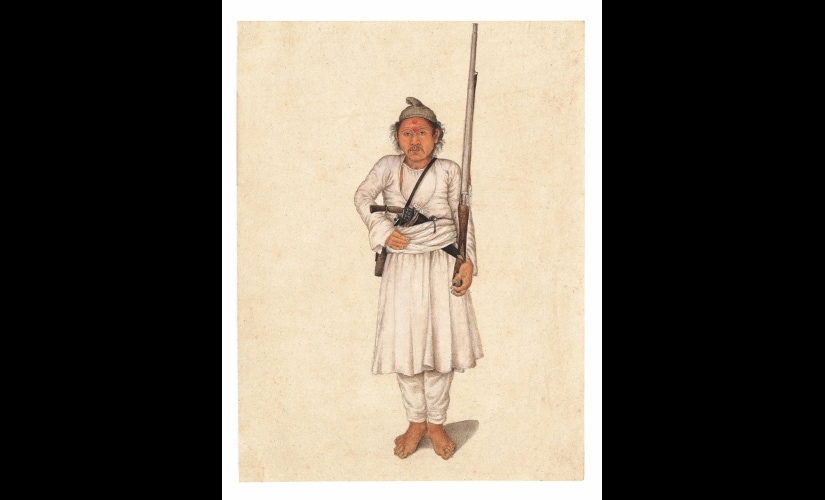 Gurkha soldier. Photo courtesy TAPI Collection/Roli Books from the book ‘Indian Life and People in the 19th Century: Company Paintings in the TAPI Collection’ by JP Losty[/caption] Losty, in his own introduction to the catalogue, touches upon how the Company paintings have been treated over time. “…the prevailing view of Company painting has been that it is historically ‘decadent’ as the product of a colonial society, and asthetically unexciting as a mixture of eastern and western artistic styles. Indeed that has been the predominant view in India itself, largely perhaps since most of the best paintings left India with foreigners who commissioned them,” he writes, although noting that such a negative attitude, fortunately, did not hinder a select number of dealers and collectors from discovering or acquiring them. Over the centuries, Indian artists have always been receptive to influences of external styles, and it was only natural for them to pick up on the European techniques to address their new patrons’ concern regarding naturalism in paintings, something that was missing in the Hindu and Islamic asthetics. These patrons included not only high ranking officials, but also army officers, wealthy visitors, travellers, among others. [caption id="" align=“alignnone” width=“825”] 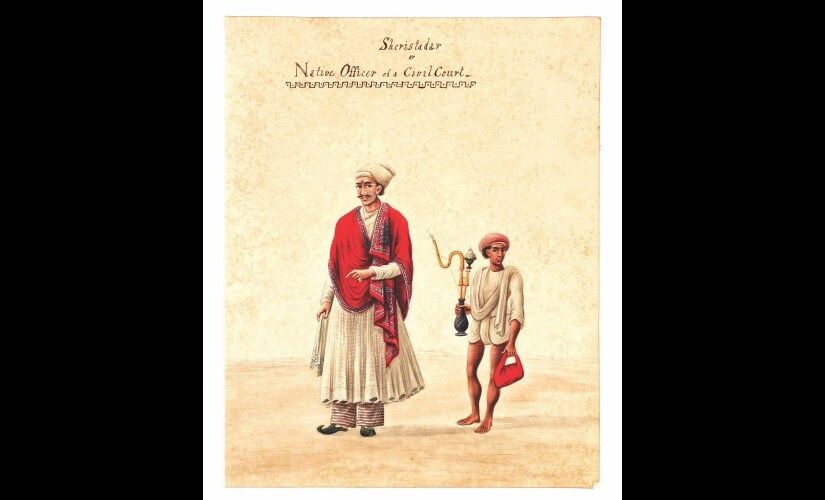 Court officer. Photo courtesy TAPI Collection/Roli Books from the book ‘Indian Life and People in the 19th Century: Company Paintings in the TAPI Collection’ by JP Losty[/caption] These painting collections were especially of great interest and importance to — hence, patronised in good number by — the women who wanted to collect the records of local life while their husbands were away on official duties. But it was the men who outnumbered them when it came to commissioning the artworks. Often lonely in their postings, and without wives, many well-educated men dedicated themselves to finding out more about their surroundings and even publishing these findings in an effort to advance their careers, Losty notes. Indian Life and People shines a fresh light on many of these collections or albums, and individual works, of the time. The catalogue itself is divided into sections based on the region or city that particular paintings were produced in, with a brief introduction for each, providing the reader with context and historical background for the paintings, its patrons and artists. It also introduces the reader to the individual albums, sets or collections of paintings reproduced here in vivid details. [caption id="" align=“alignnone” width=“825”] 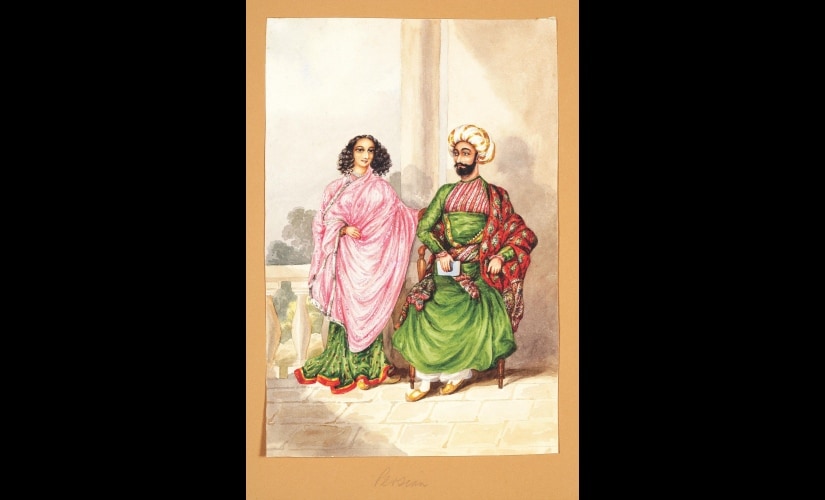 Persian couple. Photo courtesy TAPI Collection/Roli Books from the book ‘Indian Life and People in the 19th Century: Company Paintings in the TAPI Collection’ by JP Losty[/caption] Turning through the lively pages, and the often animated subjects of the paintings of the collection, one gets a sense of traversing through a time somewhat familiar but largely unknown in a visual context. Discovering the lives, traditions and professions of largely common people across the country through the eyes of artists experimenting with new ideas and techniques can be a fascinating exercise. For those even mildly curious about the Company paintings or art in India during the 18th and 19th century, the catalogue offers much to explore and learn. A beautiful and engaging record of the history of every day, uniquely captured. JP Losty’s Indian Life and People in the 19th Century: Company Paintings in the TAPI Collection is published in India by Roli Books.
Some two hundred years after they were executed, many of these paintings have found their way to collectors Shilpa and Praful Saha, founders of the TAPI Collection, and are now the subject of curator and art historian JP Losty’s catalogue of the same, Indian Life and People in the 19th Century: Company Paintings in the TAPI Collection, published by Roli Books.
Advertisement
End of Article


)
)
)
)
)
)
)
)
)



